The Materials and Techniques of Indian Miniature Paintings: A Journey Through its Many Faces
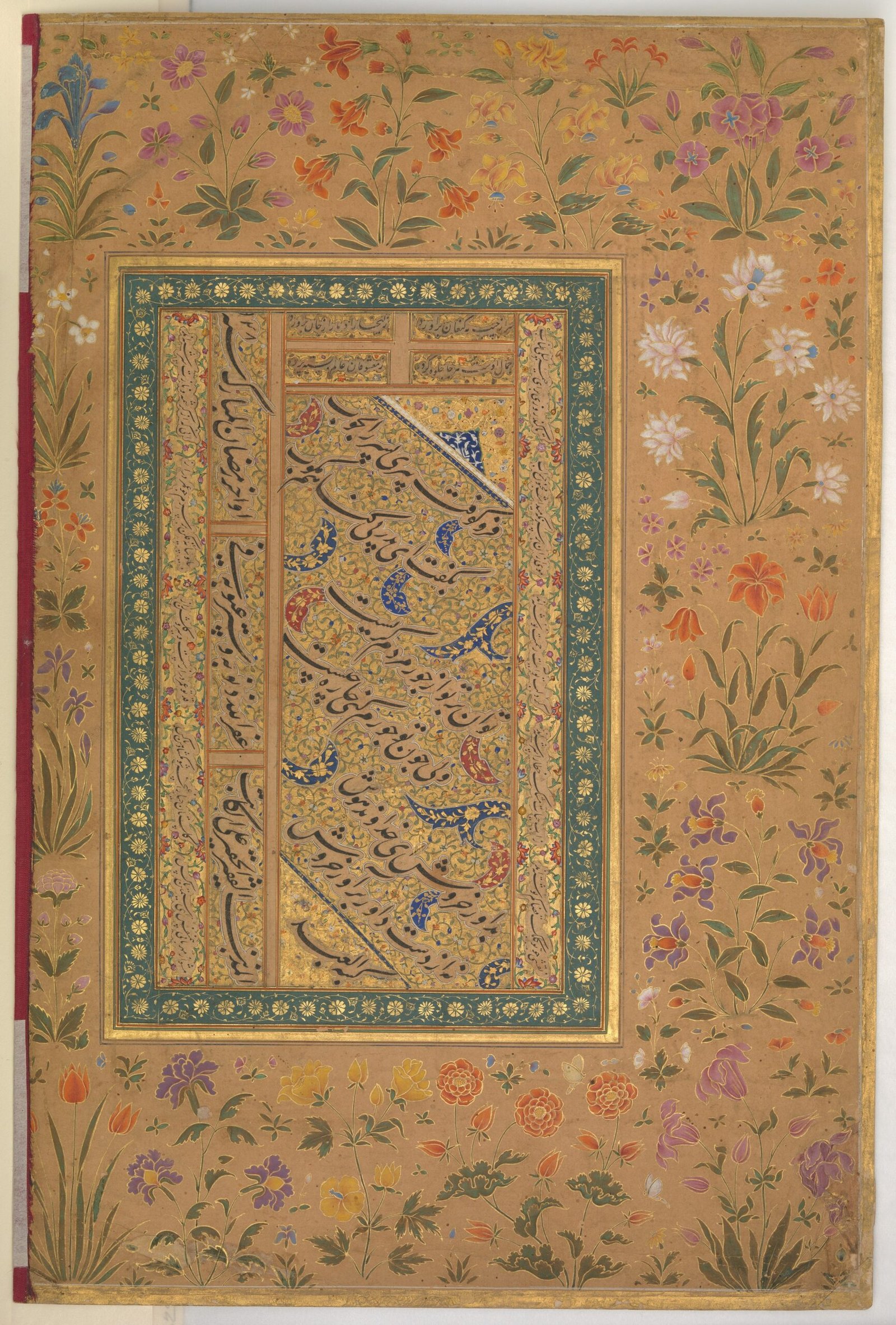
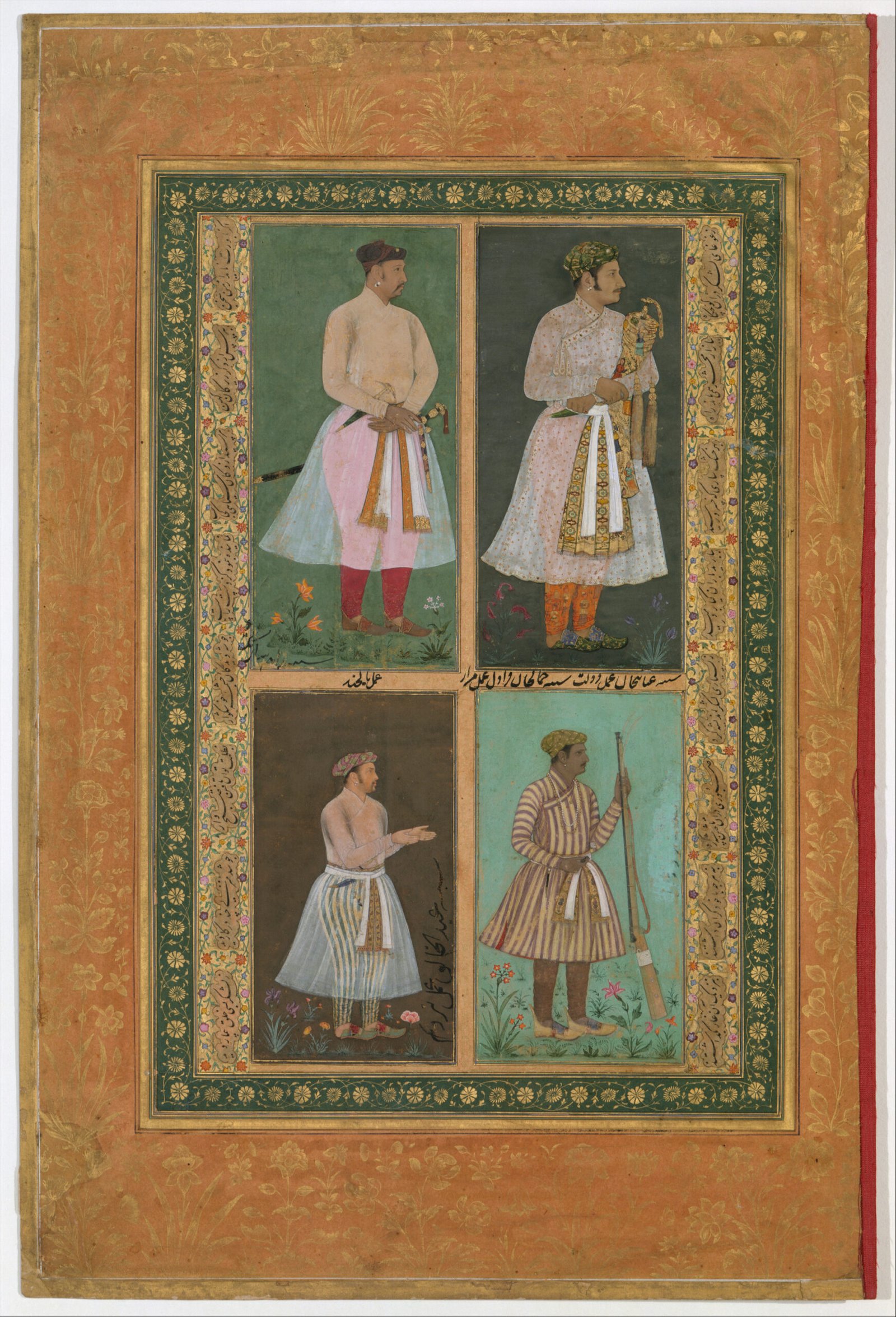
Unveiling the The Materials and Techniques of Indian Miniature Paintings
A Journey Through India’s Rich and Varied Artistic Heritage
01
In this article, we’ll take you on a journey through the techniques, materials, defining features, and themes of Indian miniature paintings. We’ll explore the materials used, the techniques employed, and the unique features that make Indian miniature paintings stand out.
Are you a fan of art and culture? If so, then you’re in for a treat with the vibrant and intricate world of Indian miniature paintings. These stunning works of art are a testament to India’s rich and varied artistic heritage. From their origins in the Mughal courts to their evolution across different regions of India, Indian miniature paintings have captured the imaginations of art lovers worldwide.
So fasten your seatbelts and get ready to explore the world of Indian miniature paintings like never before.
The Building Blocks of Indian Miniature Painting: Materials and Tools
The intricate world of paper, pigments, brushes, and leafs that create magic on a canvas
02
Indian miniature painting is known for its delicate, intricate, and detailed work that brings to life some of the most beautiful artworks. The choice of materials and tools plays a critical role in creating these masterpieces. Here is a closer look at the materials used in Indian miniature painting:
- Paper and Pigments: The choice of paper is an essential part of Indian miniature painting. Artists typically use handmade paper, which has a unique texture and absorbs pigments differently from machine-made paper. The pigments used in Indian miniature painting are primarily derived from organic and mineral sources. These pigments are carefully mixed with natural binders like gum arabic, making the colors more vibrant and long-lasting.
- Brushes: Brushes play an essential role in creating the intricate details in Indian miniature paintings. Indian miniature painting brushes are made from a variety of materials, including animal hair and plant fibers. Each brush has a unique shape and size, depending on the details it is meant to create.
- Gesso: Gesso is a mixture of chalk and glue that is used to prepare the painting surface. It creates a smooth surface that makes it easier to apply pigments and create fine details.
- Gold and Silver Leaf: The use of gold and silver leaf is a hallmark of Indian miniature painting. These metals are carefully beaten into thin sheets and applied to the painting surface. The result is a luxurious effect that adds depth and texture to the artwork.
Overall, the use of high-quality materials and tools is crucial to the creation of beautiful Indian miniature paintings. The care and attention to detail that goes into selecting and using these materials and tools ensure that each painting is a masterpiece in its own right.
The Fine Art of Technique: A Closer Look at Indian Miniature Painting
Unraveling the Mysteries of Line Work, Layering, and Stippling in Indian Miniature Painting
03
Indian miniature painting is known for its intricate details and vibrant colors. However, it’s the masterful techniques employed by the artists that truly bring these paintings to life. In this section, we’ll delve into the different techniques used in Indian miniature painting and explore the process of creating a painting from start to finish.
- Line work: Explanation of the role of line work in Indian miniature painting and the different types of lines used, including contour, hatching, and cross-hatching. Examples of how line work is used to create texture and depth in a painting.
- Layering: Overview of the layering technique used in Indian miniature painting, where multiple layers of paint are applied to create a rich and luminous effect. Explanation of how this technique is used to create depth and dimension in a painting.
- Stippling: Discussion of the stippling technique used in Indian miniature painting, where small dots of paint are applied to create texture and shading. Examples of how this technique is used to create intricate patterns and delicate details.
- The process of creating an Indian miniature painting: Step-by-step explanation of the process of creating an Indian miniature painting, from sketching the design to applying the final touches. Discussion of the importance of each stage of the process, including underdrawing, blocking in colors, and applying details.
With this section, readers will gain a deeper understanding of the techniques used in Indian miniature painting and the level of skill and precision required to create these stunning works of art.
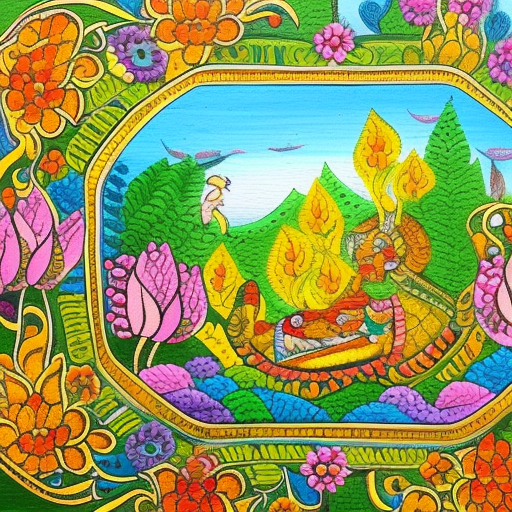
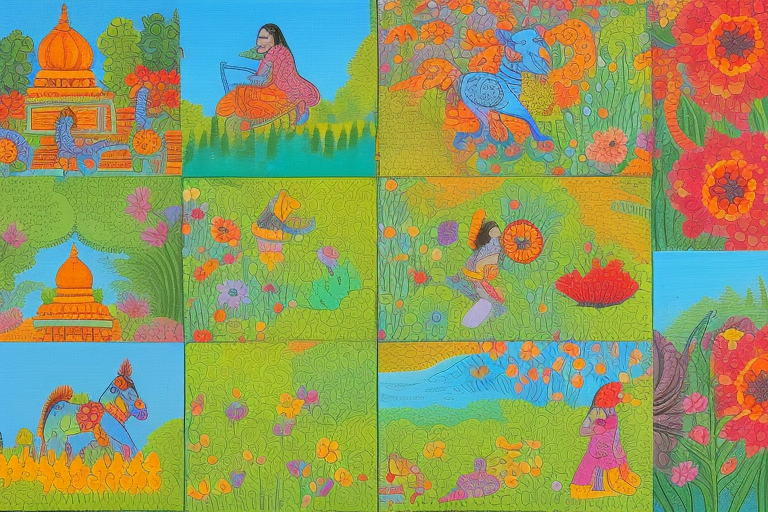
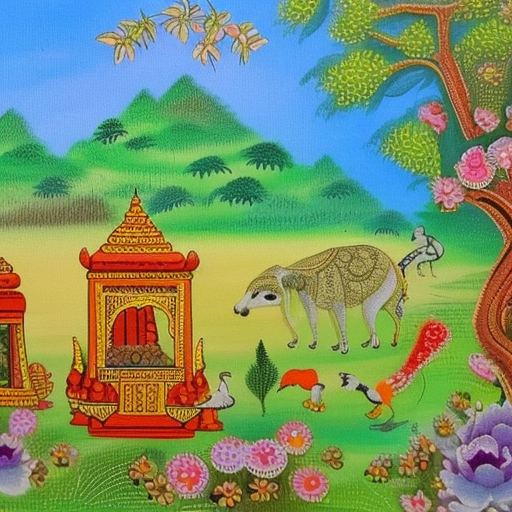
Uncovering the Hidden Meanings: Themes and Symbolism in Indian Miniature Paintings
Exploring the Spiritual and Mythological Stories Depicted in Miniature Paintings
04
Indian miniature paintings are much more than just pretty pictures. They are a medium for storytelling, and every painting tells a unique story through a blend of imagery and symbolism. In this section, we will delve into the themes and symbolism commonly found in Indian miniature paintings, exploring the spiritual and mythological stories depicted in these works of art.
• Divine and Mythological Narratives: Discussion of the religious and mythological themes that are often depicted in Indian miniature paintings, including depictions of gods, goddesses, and scenes from epic stories like the Ramayana and Mahabharata.
• Natural World: Explanation of how nature plays an important role in Indian miniature paintings, with depictions of flowers, animals, and landscapes that carry symbolic significance.
• Human Emotions and Interactions: Discussion of how Indian miniature paintings often depict the emotions and interactions of people, exploring themes such as love, devotion, and conflict.
• Symbolism: Explanation of the use of symbols in Indian miniature paintings, including how colour, position, and other elements are used to convey deeper meaning and significance.
Discovering the Key Characteristics of Indian Miniature Paintings
Unveiling the Unique Elements That Make This Art Form Stand Out
05
Indian miniature painting is renowned for its intricate details, vibrant colors, and storytelling elements that set it apart from other art forms. In this section, we will delve into the key characteristics that define Indian miniature painting and make it a unique art form.
- Precision and Detail: Indian miniature painting is characterized by a meticulous attention to detail and precision. Miniature painters use fine brushes and steady hands to create intricate patterns and designs, resulting in works of art that are highly detailed and realistic.
- Bold Colors: Bold, bright colors are a hallmark of Indian miniature painting, and each color has its symbolic significance. For example, red is often used to represent passion, while blue represents spirituality and peace.
- Narrative Style: Indian miniature painting often tells a story through a series of scenes or panels, creating a narrative style that draws the viewer into the painting. The paintings often depict religious or mythological stories, highlighting the importance of storytelling in Indian culture.
- Symmetry and Composition: Indian miniature painting places a great emphasis on symmetry and composition. The paintings are carefully balanced, with elements arranged in a way that is pleasing to the eye. This attention to composition adds to the overall effect of the painting, creating a sense of harmony and balance.
These key characteristics of Indian miniature painting are what make it a unique and highly respected art form. The intricate details, vibrant colors, and storytelling elements all contribute to creating a rich and complex work of art that is both beautiful and meaningful.
Influences on Indian Miniature Paintings: Exploring the Connections to Indian Art and the Modern Art World
Tracing the historical and cultural influences that shaped Indian miniature painting and examining its impact on the contemporary art scene.
06
Indian miniature painting has been influenced by a variety of factors over the centuries, including religion, mythology, and nature. These influences have shaped the themes, styles, and techniques of Indian miniature painting, resulting in a unique and distinctive art form. In this section, we explore the various influences on Indian miniature painting and their impact on the art world.
- Connections to Other Indian Art Forms
Indian miniature painting is closely connected to other forms of Indian art, such as sculpture and textiles. The intricate details and bold colors of Indian miniature painting are often mirrored in these other art forms, creating a cohesive and interconnected artistic tradition. We examine these connections and how they have influenced the development of Indian art over time.
- Influence on Modern Indian Art
Indian miniature painting has had a significant impact on modern Indian art movements, such as the Bengal School of Art and the Neo-Tantric movement. The precision and detail of Indian miniature painting, along with its use of bold colors and narrative style, have inspired contemporary artists to explore new forms of expression. We provide an overview of these movements and examine how Indian miniature painting continues to influence the modern art world.
Overall, Indian miniature painting is a complex and multifaceted art form that has been shaped by a rich and diverse cultural history. Its influence can be seen not only in other forms of Indian art, but also in the contemporary art world, where its unique characteristics continue to inspire artists around the globe.
Preserving the Beauty: Conservation and Restoration of Indian Miniature Paintings
Protecting the Legacy of India’s Iconic Art Form
07
Challenges of Preservation: Indian miniature paintings are fragile and require delicate handling and storage to preserve them for future generations. One of the main challenges of preserving these paintings is the threat of humidity and insect damage. The high humidity levels in many regions of India can cause the paper to warp and the pigments to fade, while insects like silverfish and bookworms can eat away at the paper.
Conservation Efforts: Despite the challenges, there are many efforts underway to conserve and preserve Indian miniature paintings. One approach is digitization, which involves creating high-resolution digital images of the paintings that can be accessed online. This not only helps to preserve the paintings but also makes them more widely available to the public.
Restoration projects are also an important part of preserving Indian miniature paintings. Skilled conservators work to repair damage to the paintings and stabilize the materials to prevent further deterioration. The Victoria and Albert Museum in London, for example, has a dedicated conservation studio where staff members work on preserving and restoring their collection of Indian miniature paintings.
The conservation and restoration of Indian miniature paintings is an ongoing effort to ensure that these important works of art are preserved for future generations to enjoy and appreciate.
Discover the Wonder and Beauty of Indian Miniature Paintings: Explore Collections from Around the World
Step into the world of Indian miniature paintings and immerse yourself in the rich and vibrant history of Indian art. From the Mughal courts to the hills of Rajasthan, these recommended collections offer a diverse range of styles, schools, and techniques. Come and witness the intricate details and masterful strokes that have captivated art lovers for centuries. Whether you are an art enthusiast, a history buff, or simply looking for a unique cultural experience, these collections are sure to leave you spellbound.
- The Metropolitan Museum of Art: Discover the captivating world of Indian miniature paintings at The Met. With a vast collection that spans from the early origins of Indian art to the development of different schools of miniature painting, explore the rich history and cultural significance of these timeless treasures. The collection also includes a timeline of Indian art and information on different schools of miniature painting, making it a must-visit for any art enthusiast.
- The National Museum, New Delhi: Experience the beauty and elegance of Indian miniature paintings at the National Museum in New Delhi. The museum features a stunning collection of works from the Mughal, Rajasthani, and Pahari schools, and provides historical context for each. With expert curation and interpretation, visitors can uncover the rich history and cultural significance of these masterpieces and gain a deeper understanding of Indian art and culture.
- The Victoria and Albert Museum: Step into the wonder and diversity of Indian miniature paintings at the Victoria and Albert Museum. With a collection that includes a range of schools and styles, visitors can explore the rich history and intricate techniques of these works of art. The collection also provides a history of Indian painting, making it a must-visit for anyone interested in art and history.
- The British Library: Immerse yourself in the world of Indian miniature paintings at the British Library. The collection features a captivating array of works from the Mughal, Rajasthani, and Pahari schools, and provides historical context for each. With expert curation and interpretation, visitors can gain a deeper understanding of the rich history and cultural significance of these masterpieces, making it a must-visit for anyone interested in Indian art and culture.
- The Smithsonian National Museum of Asian Art: Discover the beauty and wonder of Indian miniature paintings at the Smithsonian National Museum of Asian Art. With a stunning collection that includes a range of schools and styles, visitors can explore the rich history and cultural significance of these masterpieces through expert curation and interpretation. With a focus on Asian art and culture, the museum offers a unique opportunity to gain a deeper understanding of Indian art and its place in the wider cultural landscape.
Delve Deeper into the World of Indian Miniature Paintings: A Comprehensive List of Articles and Guides
Explore the rich history and artistry of Indian miniature paintings with our handpicked selection of articles and guides. From the origins and evolution of the art form to a detailed look at different schools and styles, these resources provide a wealth of information and insights. Whether you’re a seasoned collector or just starting to appreciate the beauty of miniature paintings, these articles are sure to deepen your understanding and appreciation of this fascinating art form.
- Indian Miniature Paintings: Chronicling History Through the Ages – A fascinating insight into the history of Indian miniature paintings, exploring the themes, influences, and evolution of this art form.
- The Magnificent Inspirational History Behind the Indian Miniature Paintings – A compelling read that takes you on a journey through the cultural and historical significance of Indian miniature paintings.
- 7 Popular Schools of Miniature Paintings in India – Discover the distinct characteristics of seven different schools of miniature painting in India, including Mughal, Rajasthani, and Pahari.
- Collecting Guide: Classical Indian Painting – A comprehensive guide to collecting classical Indian paintings, covering the different styles, techniques, and notable artists.
- Introduction to Indian Miniature Paintings – Learn about the origins and key features of Indian miniature paintings, as well as their cultural and historical significance.
- Indian Miniature Art: Driving You to Say Waah Kya Baat! – An entertaining and informative article that celebrates the beauty and vibrancy of Indian miniature art.
- Indian Miniature Painting: 16th through 19th Centuries – A detailed e-book that offers a chronological overview of Indian miniature paintings, providing insight into the social, cultural, and historical context in which they were created.
- Manuscript Collection of Miniature Paintings – Explore a collection of exquisite miniature paintings from Rajasthan, providing insight into the traditional techniques and themes of Indian miniature art.
- The History of Miniature Paintings: How it Originated – A concise yet informative article that traces the origins of miniature painting in India, exploring the influences and cultural significance of this art form.
- The Rich History and Diverse Styles of Indian Miniature Painting – An article on Britannica that provides a comprehensive overview of Indian miniature painting, including its history, styles, and schools.
Watch and Learn: Videos on Indian Miniature Paintings
In this section, we’ve compiled a list of videos that offer a glimpse into the world of Indian miniature paintings. From tutorials on painting techniques to virtual tours of exhibitions, these videos provide an engaging way to learn more about this fascinating art form. So sit back, relax, and enjoy these captivating videos!
Rediscovering Indian Miniature Paintings: A Journey into History
Join the team at Doordarshan as they explore the intricate world of Indian miniature paintings, from their origins to the present day. Discover the intricate techniques and designs that make Indian miniature paintings such a unique and beloved art form. This video provides a fascinating look at the history and evolution of this ancient tradition, as well as a glimpse into the lives of the artists who continue to keep it alive today.
